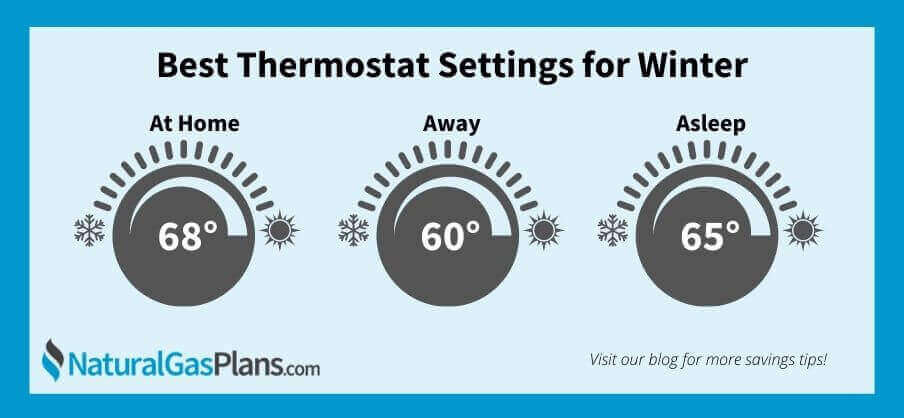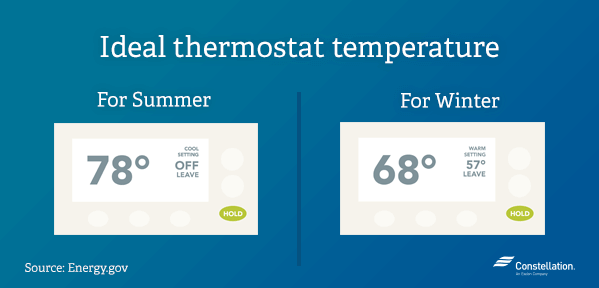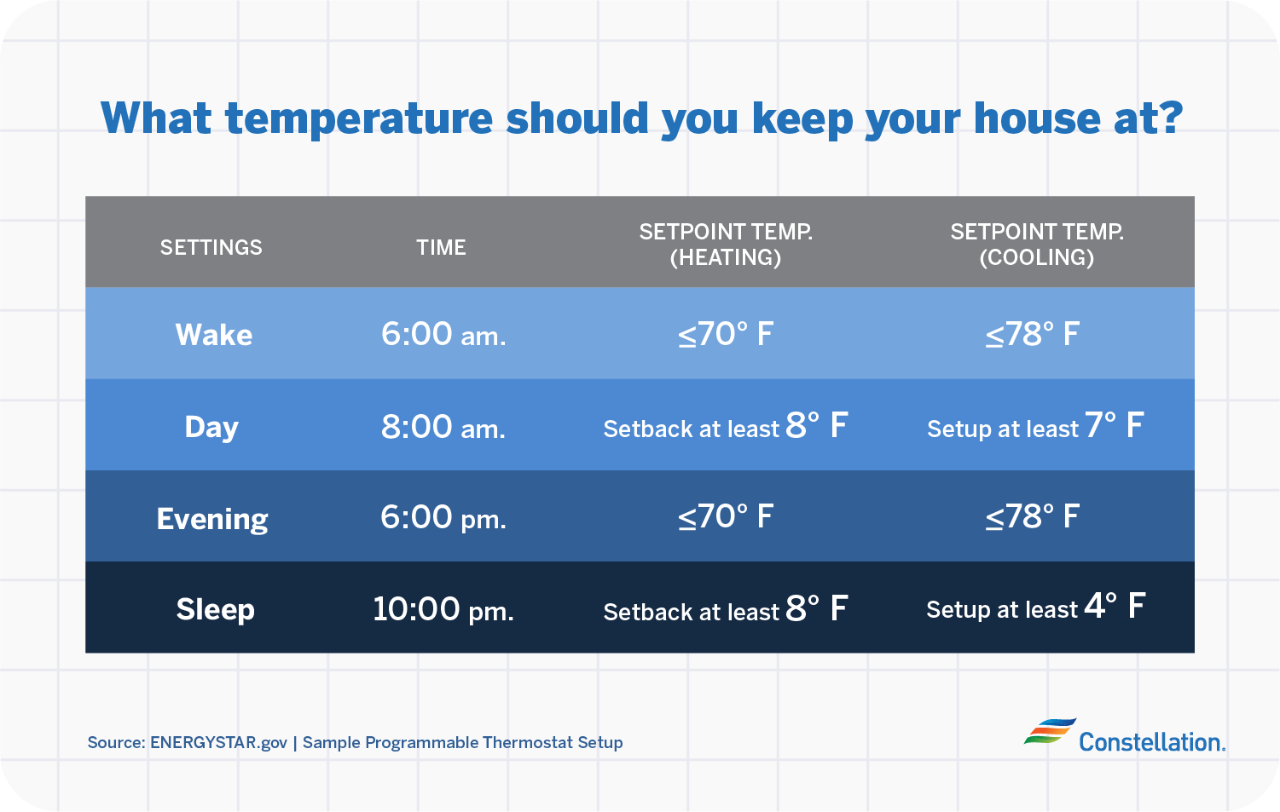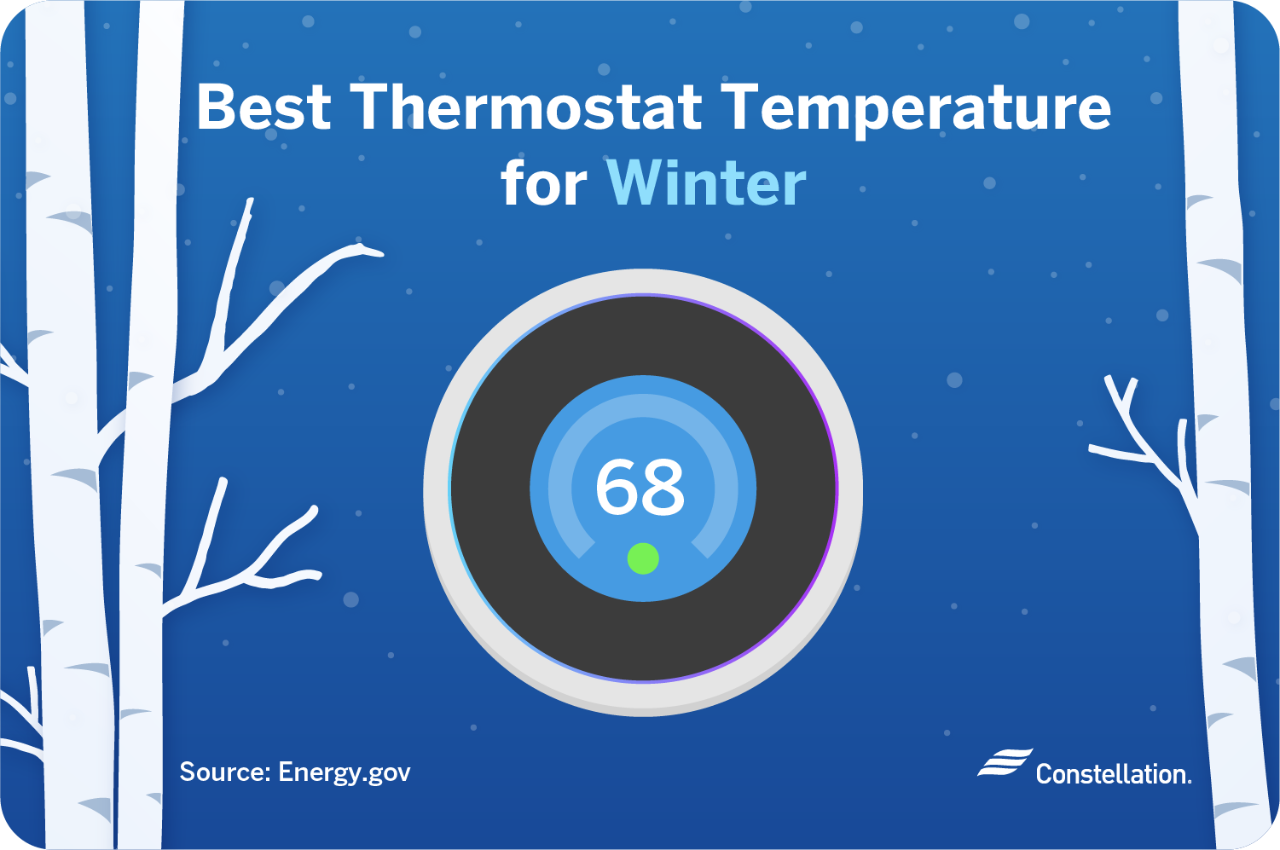Average Temp To Set Thermostat In Winter

Finding the Goldilocks Zone: What's the Average Temperature to Set Your Thermostat in Winter for Maximum Savings?
Winter's chill can send energy bills soaring, but finding the sweet spot for your thermostat setting is key to staying comfortable without breaking the bank. The "average" temperature isn't a one-size-fits-all answer. It depends on factors like your insulation, climate, and personal preferences. However, understanding the principles behind efficient heating can unlock significant energy savings for homeowners and businesses alike.
The Magic Number: 68°F and Beyond
Energy Star, the government-backed symbol for energy efficiency, recommends setting your thermostat to 68°F (20°C) while you're awake and active during the winter. This temperature is a starting point for finding your personal balance between comfort and cost. Lowering the temperature further while you're asleep or away from home yields even greater savings.
Why 68°F? Understanding the Energy-Saving Science
The reason 68°F is a recommended baseline is simple: it's a temperature that most people find comfortable while minimizing the amount of energy your heating system needs to expend. Every degree you lower your thermostat translates to significant energy savings. According to the U.S. Department of Energy, you can save as much as 1% for each degree you lower your thermostat for an eight-hour period. That adds up quickly over a long winter!
The Power of Setbacks: Saving While You Sleep and Away
The real energy-saving magic happens when you implement temperature "setbacks." This means automatically lowering the thermostat setting when you're asleep or away from home. The longer the setback period, the greater the savings.
Consider these scenarios:
- Nighttime Setbacks: Dropping the temperature to 62°F (17°C) or even 60°F (15.5°C) while you sleep. Bundle up with extra blankets!
- Away-from-Home Setbacks: If you work outside the home, lower the thermostat to 55°F (13°C) or even lower, depending on your climate and how well your home is insulated. This prevents your pipes from freezing and minimizes energy waste.
Implementing these setbacks can result in energy savings of 5% to 15% annually, according to the Environmental Protection Agency (EPA).
Smart Thermostats: Automating Energy Efficiency
While manually adjusting your thermostat is effective, smart thermostats take energy savings to the next level. These devices learn your heating and cooling patterns, automatically adjusting the temperature based on your schedule, occupancy, and even the weather forecast.
Here's how smart thermostats boost energy efficiency:
- Programmable Schedules: Easily create customized heating schedules for different days of the week.
- Geofencing: Use your smartphone's location to detect when you're leaving or returning home, automatically adjusting the temperature accordingly.
- Remote Control: Adjust the temperature from anywhere using your smartphone or tablet.
- Energy Reports: Track your energy usage and identify areas for improvement.
- Learning Capabilities: Some smart thermostats learn your preferences over time and automatically optimize your heating schedule for maximum savings.
Leading smart thermostat manufacturers, such as Nest, Ecobee, and Honeywell, offer models with varying features and price points. Many utility companies offer rebates on smart thermostats, further reducing the upfront cost and accelerating your ROI.
Beyond the Thermostat: A Holistic Approach to Winter Energy Savings
Setting the right thermostat temperature is just one piece of the energy-efficiency puzzle. To maximize your savings, consider these additional measures:
- Improve Insulation: Proper insulation is crucial for preventing heat loss. Insulate your attic, walls, and floors to recommended levels.
- Seal Air Leaks: Caulk and weatherstrip around windows and doors to prevent drafts. Seal any gaps or cracks in your foundation or walls.
- Upgrade Windows: Consider replacing older, single-pane windows with energy-efficient double-pane or triple-pane windows.
- Maintain Your HVAC System: Schedule regular maintenance for your furnace or heat pump to ensure it's operating efficiently. Change your air filter regularly.
- Consider a Smart Home Energy Audit: An audit can pinpoint areas where your home is losing energy and recommend specific improvements.
- Use Space Heaters Wisely: While space heaters can provide supplemental heat, they can also be energy hogs. Use them sparingly and only in occupied rooms. Ensure they have safety features like auto shut-off.
- Dress Appropriately: Wear warm clothing indoors to reduce the need for high thermostat settings.
ROI and Rebates: Making the Investment Worthwhile
Investing in energy-efficient upgrades might seem costly upfront, but the long-term ROI can be substantial. Energy savings translate to lower monthly bills, and many utility companies and government agencies offer rebates and incentives to encourage energy-efficient upgrades.
Here are some potential rebates to look for:
- Smart Thermostat Rebates: Many utility companies offer rebates on smart thermostats to encourage adoption.
- Insulation Rebates: Check with your local utility or state energy office for rebates on insulation upgrades.
- Window Replacement Rebates: Some programs offer rebates on energy-efficient window replacements.
- HVAC Equipment Rebates: If you're replacing your furnace or heat pump, look for rebates on high-efficiency models.
Be sure to research available rebates and incentives in your area before making any upgrades. The savings can significantly offset the initial cost.
For Businesses: Scaling Energy Efficiency
The principles of energy-efficient thermostat settings apply to businesses as well. However, commercial buildings often have more complex HVAC systems and occupancy patterns. Businesses should consider:
- Zone Control: Dividing the building into zones with individual thermostat controls allows for more precise temperature management.
- Occupancy Sensors: Automatically adjust the temperature based on occupancy in different areas of the building.
- Building Automation Systems (BAS): Integrate HVAC, lighting, and other systems into a BAS for centralized control and optimization.
- Regular Energy Audits: Conduct regular energy audits to identify areas for improvement and track progress.
By implementing these strategies, businesses can significantly reduce their energy consumption and operating costs while creating a more comfortable and productive work environment. Partner with an HVAC contractor specializing in commercial energy efficiency for expert guidance.
HVAC Contractors: Selling Energy-Efficient Solutions
HVAC contractors play a crucial role in helping homeowners and businesses achieve energy efficiency. Contractors should:
- Offer Energy Audits: Provide comprehensive energy audits to identify areas for improvement.
- Recommend Energy-Efficient Equipment: Promote high-efficiency furnaces, heat pumps, and air conditioners.
- Install Smart Thermostats: Offer smart thermostat installation and integration services.
- Educate Customers: Explain the benefits of energy-efficient upgrades and how to maximize savings.
- Stay Up-to-Date: Keep abreast of the latest energy-efficient technologies and rebates.
By positioning themselves as energy-efficiency experts, HVAC contractors can attract new customers and build long-term relationships.
The Bottom Line: Comfortable Savings Are Within Reach
Finding the optimal thermostat setting for winter is a balancing act between comfort and cost. While 68°F is a good starting point, experimenting with setbacks and investing in smart technology can unlock significant energy savings. By taking a holistic approach to energy efficiency, homeowners and businesses can create comfortable, cost-effective, and sustainable living and working environments.
Remember to factor in your local climate, insulation levels, and personal preferences when determining the ideal thermostat setting. With a little experimentation and planning, you can enjoy a warm and cozy winter without breaking the bank.
Consider consulting with a qualified HVAC professional for personalized recommendations and to ensure your heating system is operating at peak efficiency. And don't forget to check for available rebates and incentives in your area to further reduce the cost of energy-efficient upgrades.










